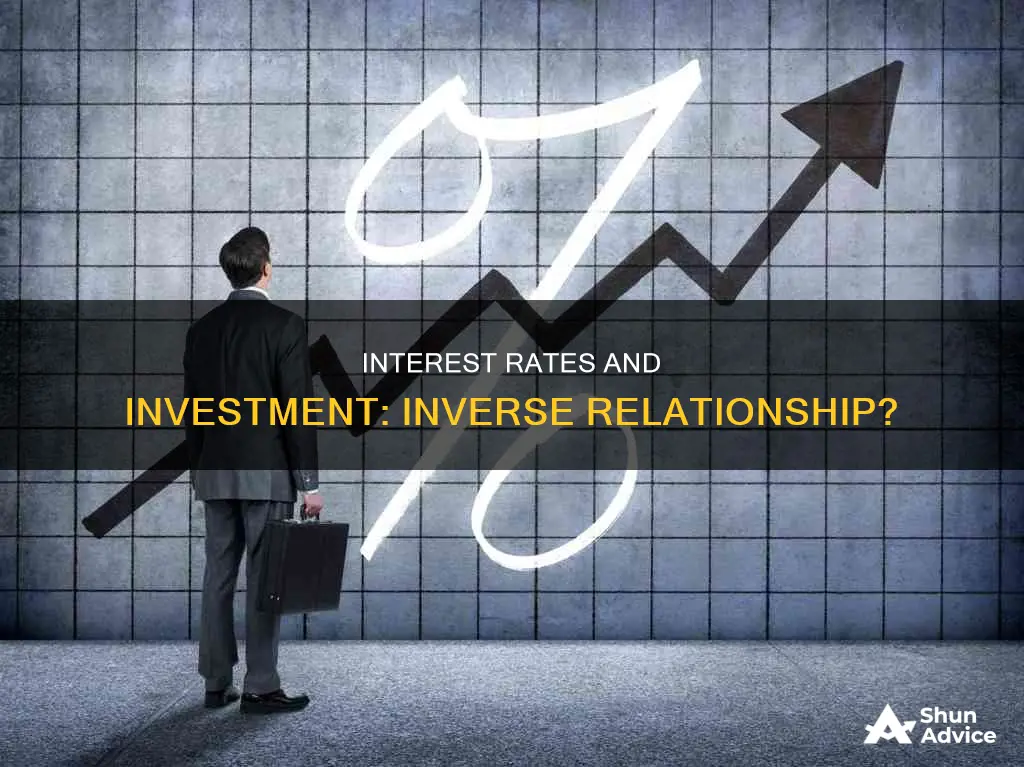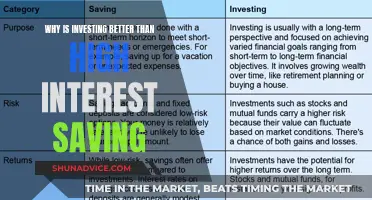
Lower interest rates can increase investment spending by making it cheaper and easier for businesses to borrow money to finance new projects. Lowering interest rates can also encourage consumers to borrow more and spend more, which in turn justifies more business expansion. Lower interest rates can be used to boost the economy, while increasing interest rates can be used to slow it down. The Federal Reserve Board in the U.S. adjusts interest rates to keep prices and demand for goods and services steady.
| Characteristics | Values |
|---|---|
| Effect on businesses | Lower interest rates make it easier for businesses to borrow money to finance new projects and invest in expansion. |
| Effect on consumers | Lower interest rates mean consumers can borrow more and spend more, particularly on big-ticket items. |
| Effect on the economy | Lower interest rates are used to boost the economy and prevent recessions. Higher interest rates are used to slow down the economy and prevent inflation. |
| Effect on the stock market | Interest rate fluctuations have a substantial effect on the stock market. |
What You'll Learn

Lower interest rates can increase business investment
In the United States, the Federal Reserve Board, or the Fed, adjusts interest rates to keep prices and demand for goods and services steady. During an economic downturn, the Fed may lower interest rates to encourage additional investment spending and steer the country clear of recessions. This is a key part of national monetary policy.
The Fed also has a delicate balancing act to perform. While lower interest rates can increase investment spending, they can also lead to higher inflation if the economy is growing too fast. In this case, the Fed may increase interest rates slightly to keep inflation under control. Business rates can also vary depending on the soundness of the company and its ability to offer collateral for a loan.
The Magic of Compound Interest for Long-Term Investments
You may want to see also

Lower interest rates can increase consumer spending
Lower interest rates also make it easier for businesses to borrow money to finance new projects, which can lead to increased production and the creation of new jobs. This, in turn, can lead to more consumer spending as consumers have more money to spend.
The Federal Reserve Board in the US, also known as the Fed, uses monetary policy to adjust interest rates and keep the economy stable. During an economic downturn, the Fed may lower interest rates to encourage additional investment spending and steer the country clear of a recession.
However, it is important to note that the Fed must perform a delicate balancing act. When the economy is growing too fast, the Fed may increase interest rates slightly to keep inflation at bay.
Interest Rates: Impact on Savings and Investments
You may want to see also

Interest rates are a key part of national monetary policy
The Fed uses monetary policy to keep the economy stable. During an economic downturn, the Fed may lower interest rates to encourage additional investment spending. When the economy is growing too fast, the Fed may increase interest rates slightly to keep inflation at bay.
The Fed indirectly adjusts long-term interest rates by setting the federal funds rate, which is the interest that banking institutions charge one another for overnight loans of cash reserves or balances that are needed to meet minimum reserve requirements. It is long-term rates that affect investment spending.
Interest rate fluctuations have a substantial effect on the stock market, inflation, and the economy as a whole.
Interest Rate Hike: Impact on Foreign Investment Flows
You may want to see also

Interest rate fluctuations affect the stock market, inflation and the economy
Interest rate fluctuations have a substantial effect on the stock market, inflation and the economy as a whole. Lower interest rates make it cheaper and easier for businesses to borrow money to finance new projects, which can lead to more investment spending. Lower interest rates also make it cheaper for consumers to borrow money, which can lead to more spending and more business expansion.
Lowering interest rates is the Fed's most powerful tool to increase investment spending in the US and to attempt to steer the country clear of recessions. During an economic downturn, the Fed may lower interest rates to encourage additional investment spending. Lower interest rates for consumers mean more spending, and lower interest rates for businesses mean increased production of goods and the creation of new jobs.
However, when the economy is growing too fast, the Fed may increase interest rates slightly to keep inflation at bay. The Fed uses monetary policy to keep the economy stable, and it has a delicate balancing act to perform. Interest rate fluctuations can affect the stock market, as lower interest rates make big-ticket items cheaper for both businesses and consumers, which can lead to more investment and spending.
Investing in a Low-Interest-Rate Environment: Strategies for Success
You may want to see also

The Fed uses monetary policy to keep the economy stable
Lower interest rates increase business investment by making it cheaper and easier for businesses to borrow money to finance new projects. Lower interest rates also encourage consumers to borrow more and buy more, justifying business expansion.
Why Investment Homes Have Higher Interest Rates Than Second Homes
You may want to see also
Frequently asked questions
Low interest rates increase investment.
Low interest rates make it cheaper and easier for businesses to borrow money to finance new projects.
Low interest rates mean consumers spend more, as they can borrow more.
Low interest rates can be used to steer the economy away from recessions.
Interest rate fluctuations have a substantial effect on the stock market.







